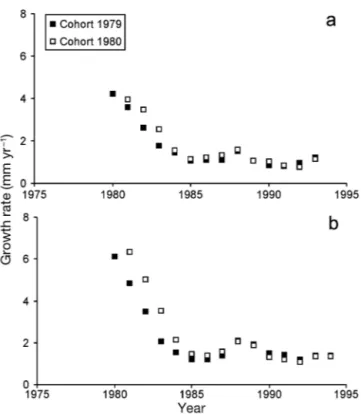Growth compensation as a regulatory mechanism of purple clam Amiantis purpurata population dynamics in Patagonia
Texto completo
Figure




Documento similar
Carmignani(2003) found that the effect of fragmentation on growth is negative. In this study, the relation between political instability and economic growth in countries will
Based on a more adequate data, robust ana- lysis, and a better understanding of popula- tion size calculations, population dynamics, and geographic distribution, we reassessed
This expectation is based on the relationship between forecast errors of quarterly GDP growth and subsequent revisions to GDP-growth forecasts in the Funcas survey shown in Figure
This expectation is based on the relationship between forecast errors of quarterly GDP growth and subsequent revisions to GDP-growth forecasts in the Funcas survey shown in Figure
For a short explanation of why the committee made these recommendations and how they might affect practice, see the rationale and impact section on identifying children and young
The expansionary monetary policy measures have had a negative impact on net interest margins both via the reduction in interest rates and –less powerfully- the flattening of the
Jointly estimate this entry game with several outcome equations (fees/rates, credit limits) for bank accounts, credit cards and lines of credit. Use simulation methods to
In particular, we performed simultaneously a like- lihood analysis of the recent expansion data (SnIa, CMB shift parameter and BAO) together with the growth rate of structure data,
